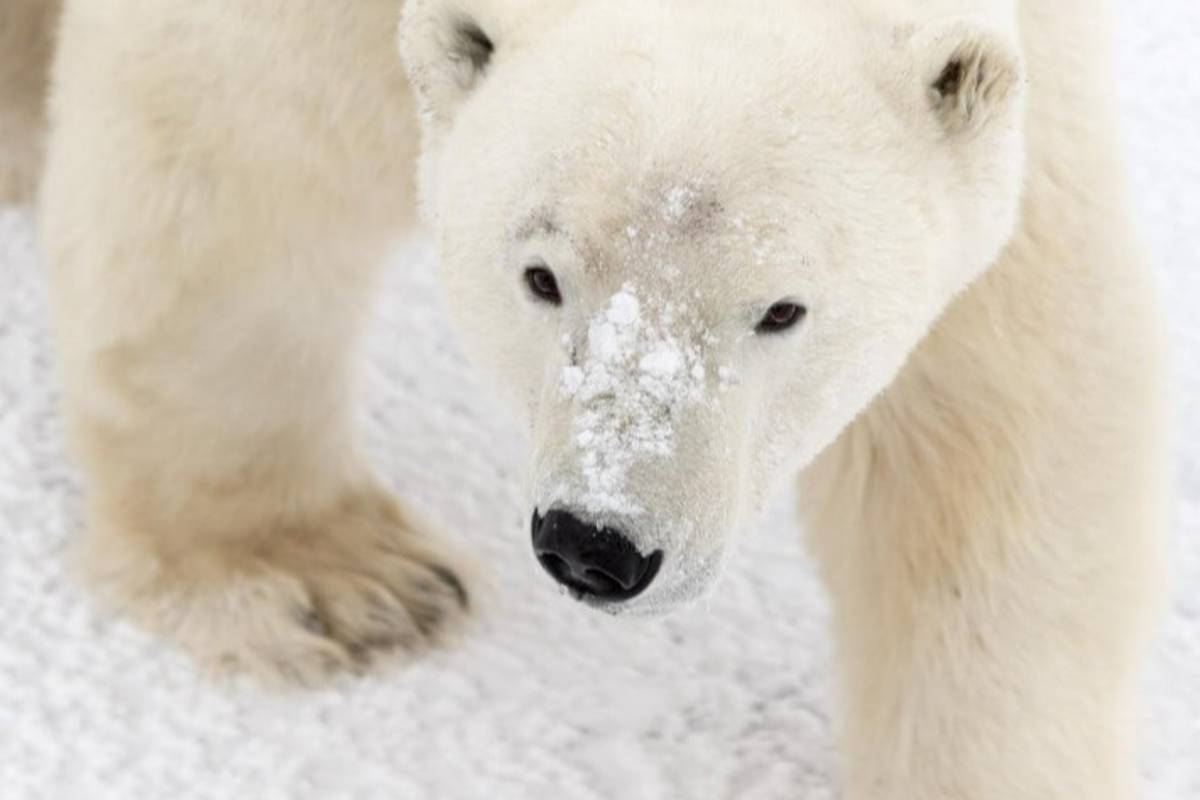Bozeman, Montana – October 7, 2020 – A new study has found that bear spray remains effective across a range of environmental conditions and as canisters age. This bolsters previous research showing that bear spray is an effective defense during close-range bear encounters. Led by Dr. Tom Smith of Brigham Young University with support from researchers at Polar Bears International and other leading organizations, the study, “An Investigation of Factors Influencing Bear Spray Performance,” was published in the Journal of Wildlife Management.
The research team examined the performance of bear spray in a lab setting to answer three basic questions:
How well does bear spray work in windy conditions?
How well does it work in the cold?
How long do cans of bear spray remain effective?
Through rigorous testing under various scenarios, the team found bear spray to be effective in both wind and cold—in fact, in all environmental conditions where bears occur. They also found that older cans of bear spray can remain effective but recommend following the expiration dates posted on cans for best performance.
“Although bear spray is a proven deterrent, many people have been reluctant to use it in windy conditions or very cold weather, especially in northern regions,” Smith says. “This paper lays those fears to rest. Our findings show that bear spray works reliably even in strong winds or extreme cold. The bottom line is: When in bear country, everyone should carry bear spray.”
Key findings:
Even at -23 °C, bear spray had a range of over 4m, still allowing the user to spray and deter the bear.
As canister temperature increases, the pressure, plume distance and dispersion increase. Once above freezing, the temperature has no impact on the effectiveness.
Even with high wind scenarios, bear spray affords protection. When there are high headwinds (44 miles/hour at the nozzle), it can reach 2m directly in front of the person deploying it.
Older, unused cans will still deliver a strong blast when deployed. Looking at sprays up to 18 years old, the authors found the chemicals comprising bear spray are stable over time.
The first second of spray released more contents than the remaining six, thus the study recommends entering bear country with a fully charged, new can of spray.
“When bears and people live close together, the risk of conflict increases,” says Geoff York, co-author, Senior Director of Conservation at Polar Bears International and an active member and past chair of the Polar Bear Range States Conflict Working Group, as is Smith. “This is already happening around the world and is expected to continue due to global warming, especially in the Arctic.”
“Climate change continues to reduce sea ice and people keep expanding into a thawing Arctic,” York added. “Polar bears rely on the sea ice to hunt, and thus are being forced to fast on land for longer periods of time. Polar bears typically avoid humans, but they have a keen sense of smell and, when hungry, will overcome their natural instinct to stay away.”
Authors include Dr. Tom S. Smith of Brigham Young University, James M. Wilder of the U.S. Forest Service, Geoffrey York of Polar Bears International, Martyn E. Obbard of Trent University, and Blake W. Billings of the University of Utah. They analyzed the influences of temperature, wind, repeated canister use, and canister age on spray efficacy. The performance results broadly apply to bear spray products regardless of manufacturer. The factors were chosen in part because they were often cited as reasons for lacking confidence in bear spray’s ability to deter aggressive bears and are discussed alongside bear safety implications. In extreme cold, researchers advise keeping canisters warm by wearing them in a holster under a coat or, when camping, in a sleeping bag.
The results show that even under the most adverse conditions, an aggressive bear sprayed point-blank will receive a face and lungs full of this highly irritating product. In addition to the product’s effectiveness, anyone can use bear spray without training, filling a need for an alternative to firearms. Also, it’s very easy to keep canisters warm in cold regions by keeping them in a readily accessible pocket inside or outside of a parka.
About Polar Bears International
Polar Bears International’s mission is to conserve polar bears and the sea ice they depend on. Through media, science, and advocacy, we work to inspire people to care about the Arctic, the threats to its future, and the connection between this remote region and our global climate. PBI is the only nonprofit organization dedicated solely to wild polar bears and Arctic sea ice, and our staff includes scientists who study wild polar bears. The organization is a recognized leader in polar bear conservation. For more information, visit www.polarbearsinternational.org.

















